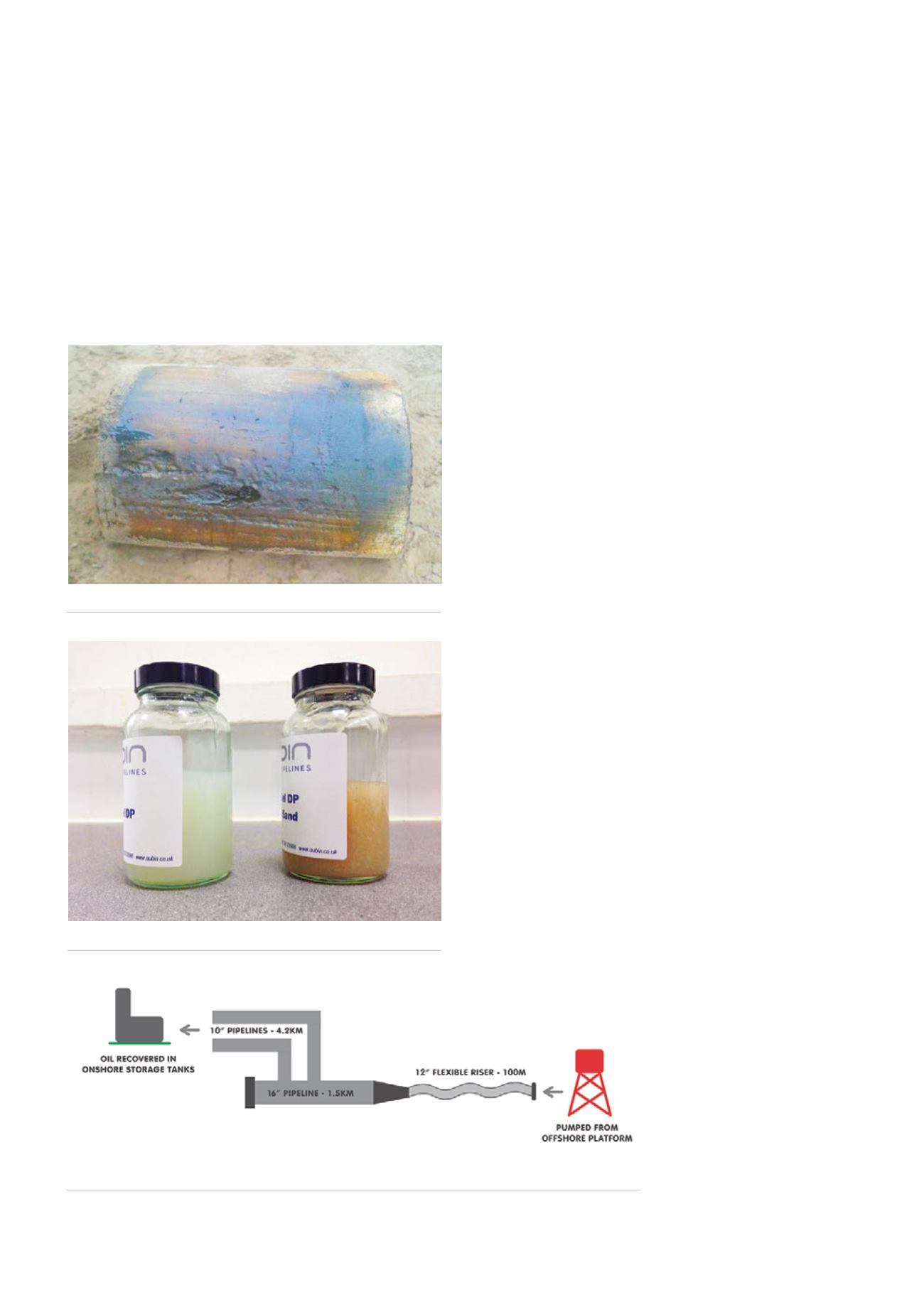
)
)
Cleaning in a single pass, saving time.
)
)
Enhance mechanical pig performance, pig lubrication,
reduced bulldozing of debris and less risk of pig sticking.
)
)
Verifiable estimate of debris removed and remaining.
)
)
Useful in critical applications such as black powder removal
before inline inspection.
Versatile materials
To provide the best performance, Aubin pipeline gels are based
on a variety of fluids such as freshwater, seawater, hydrocarbon,
finished product (e.g. diesel) organic solvent, alcohols and
glycols. Aubin’s MEG Gel is particularly useful in spool filling
during pipeline construction, where the reduction of ingress
helps prevent problems after commissioning caused by water,
chloride ion or debris contamination.
Aubin has recently developed both hydrocarbon-based
and environmentally friendly water-based gels to provide
improved performance in resistance to dilution and debris
carrying performance in variable pigging speed scenarios. In
the past, pipeline gels have occasionally failed to adequately
suspend and carry heavy debris out of the line due to
dilution, bypass, or picking up excess fluid in the debris.
This can cause the theological properties of the gel to
deteriorate until suspension of the debris is compromised.
Similarly, there have been problems reported when the pig
velocity falls below the optimal pigging speed of 0.5 - 2 m/s.
This can provoke the sedimentation of debris in some gels
where there is insufficient turbulence to keep the debris in
suspension. The consequence is a debris concentration at
the 6 o’clock position, which can then accumulates in front
of a mechanical pig, to the extent that it may stick – very
undesirable. In contrast, Aubin’s Pipeline Gel DP can suspend
heavy solids at a wide variety of pig speeds, and can tolerate
50% dilution and complete flow shut down. Suspending
debris for prolonged periods; the pipeline gel train may
even be ‘parked’ for periods of hours, even days, without
significant debris drop out. Aubin’s hydrocarbon-based
petrogel fluids provides similar options when water-based
fluids are undesirable. They normally utilise diesel as the
base fluid, although other hydrocarbons and solvents can be
used following testing. Figure 4 shows standard Petrogel DP
next to an identical sample containing 10% of debris (sand).
After 24 hours static, no sedimentation of debris has taken
place.
De-oiling
A Middle East offshore subsea pipeline system consisting of
two 10 in. pipelines and 16 in. header was being repurposed
to provide water for emergency firefighting, therefore it was
necessary to maximise oil recovery from the line prior to use
(Figure 5).
Aubin’s water-based separator gel, Pipeline Gel 33, was
used due to the high viscosity of the oil (up to 140 cSt at 50˚C).
The gel was supplied in its concentrate form to aid transport;
6000 litres of gel was produced, cross-linked and injected
through the 12 in. flexible riser and into the 16 in. header.
Treated seawater pushed the
slug into the two 10 in. lines
and finally to onshore storage
tanks. The line was successfully
de-oiled and 344 m
3
of residual
crude oil recovered. The use of
Aubin pipeline gel had other
advantages: a reduction in the
time required to meet oil in
water specifications; reduced
water and treating chemical
consumption; and lower liquid
processing and disposal costs,
Figure 3.
EVO-Pig after removing post.
Figure 4.
Petrogel DP sand suspension, 24 hours static.
Figure 5.
Gel assisted de-oiling, field diagram.
42
World Pipelines
/
JULY 2015


